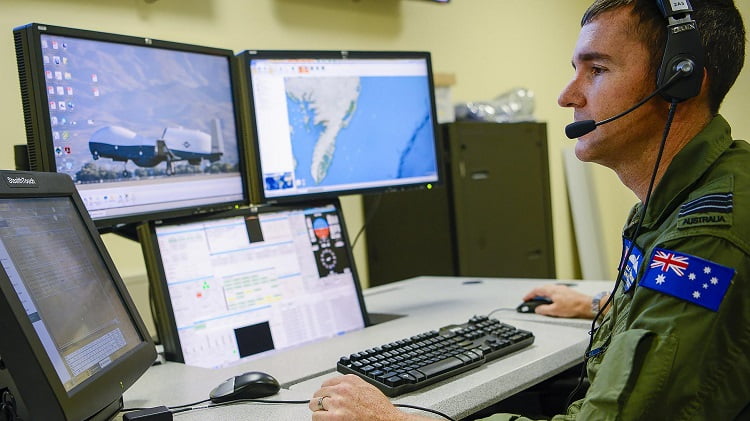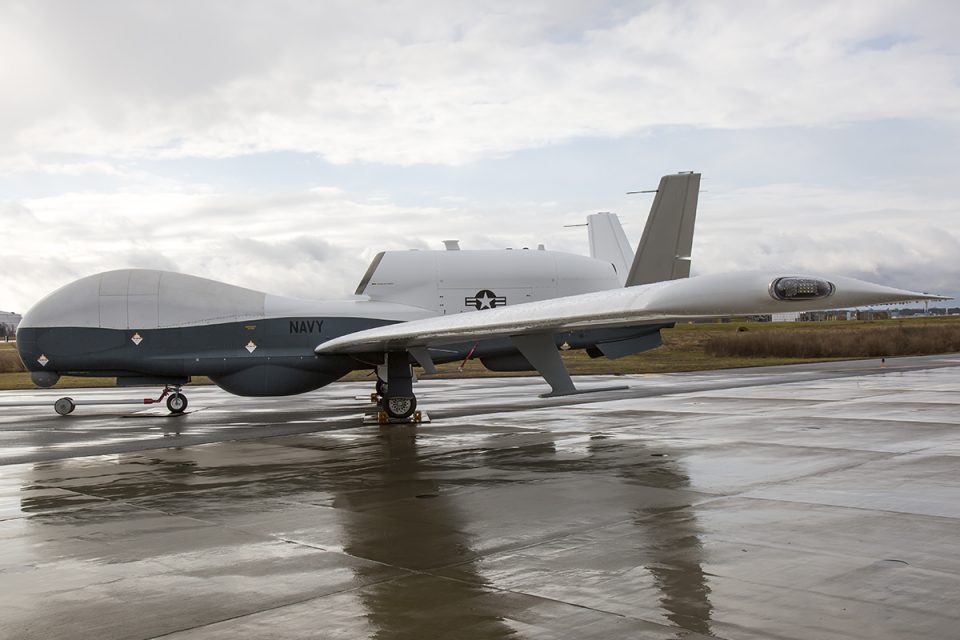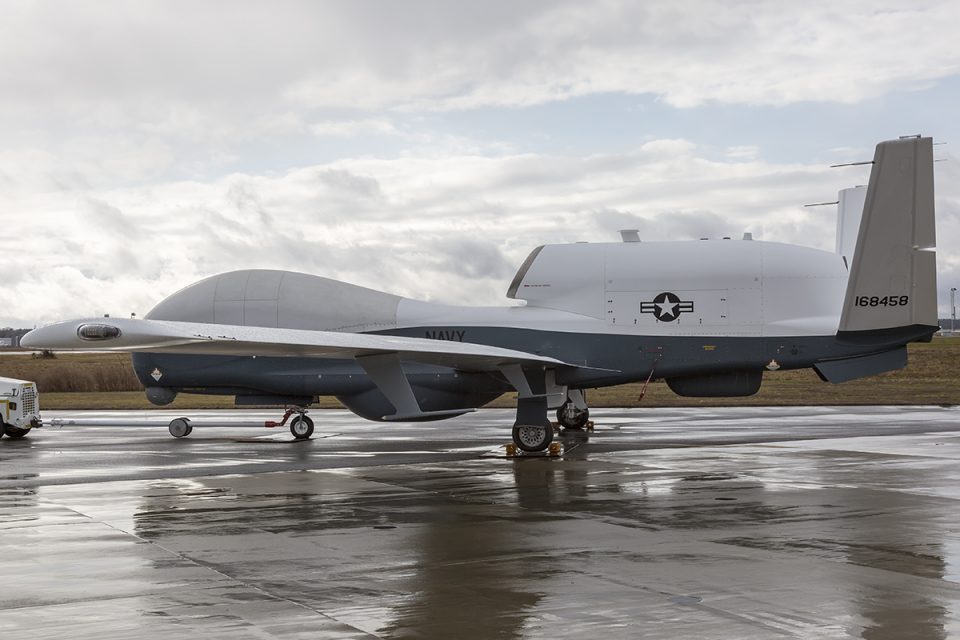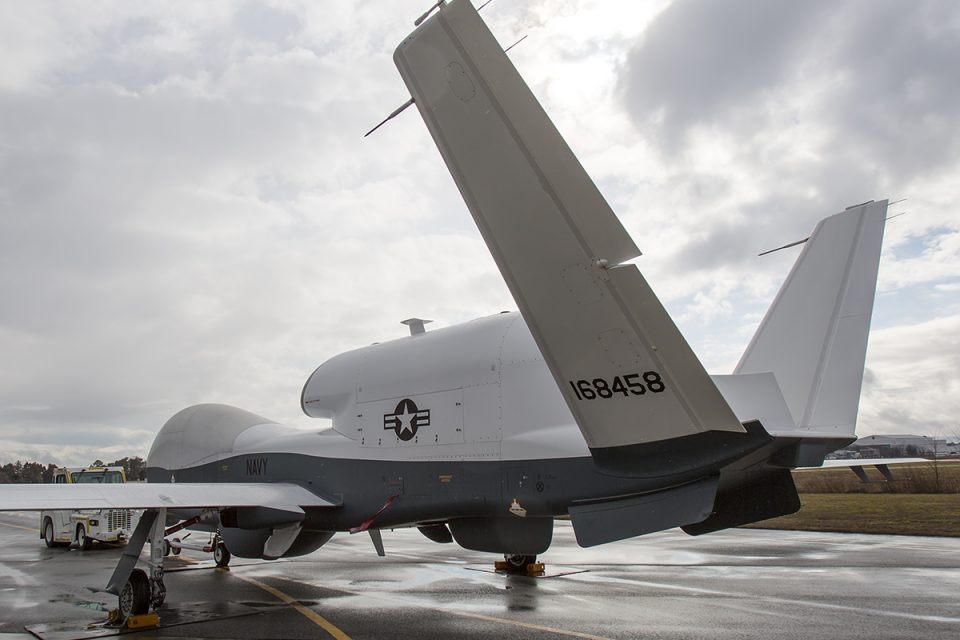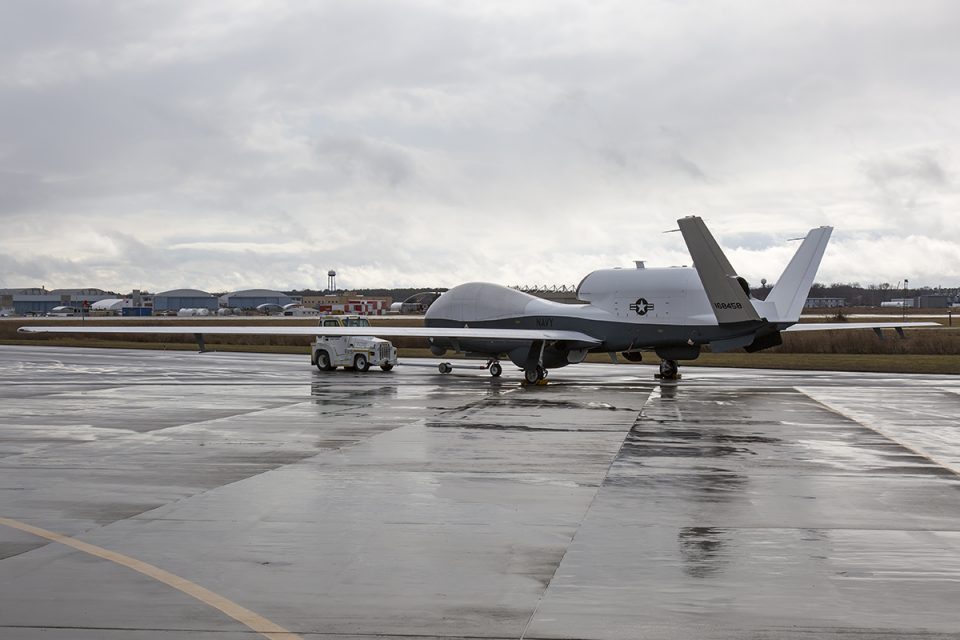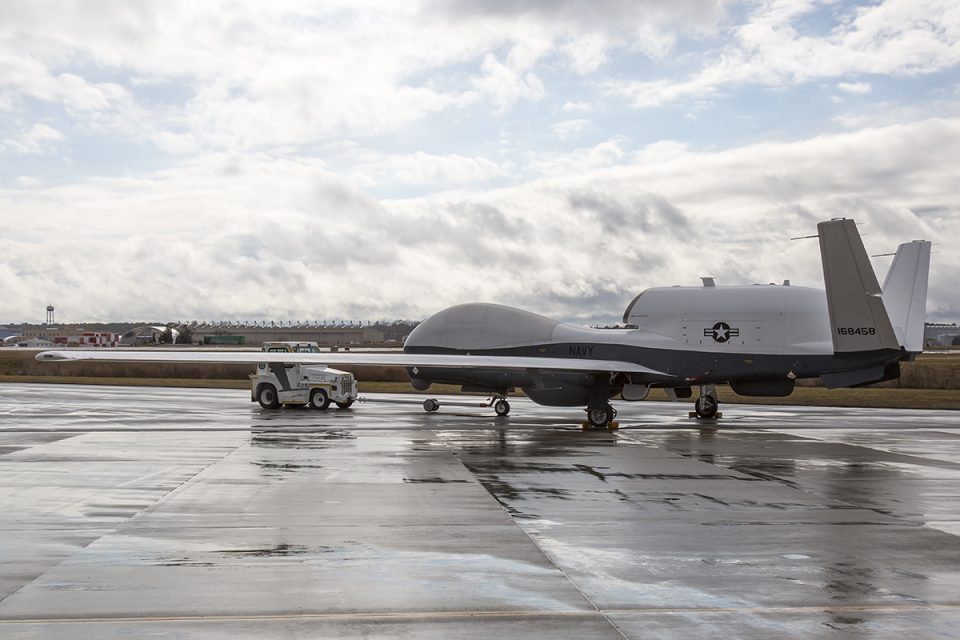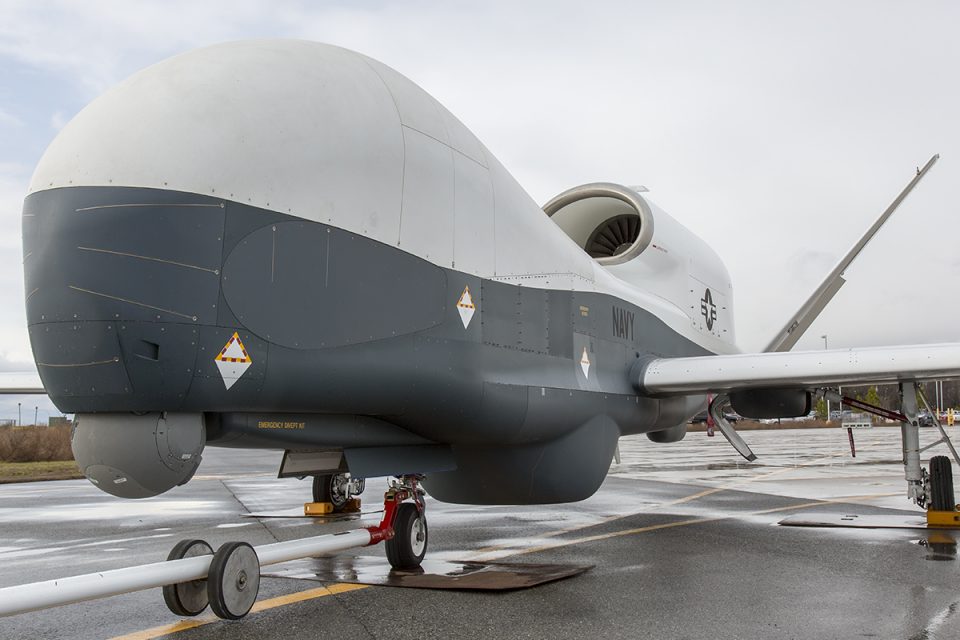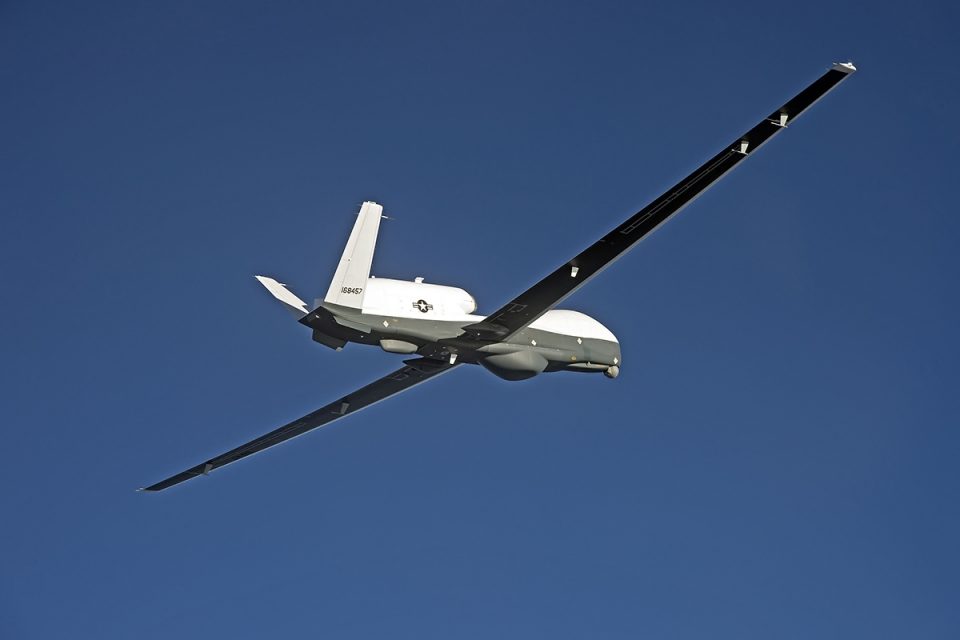The Triton unmanned system is a key building block for 21st century maritime operations.
In effect, the Triton provides capabilities similar to a low-earth orbiting system which can serve directly the maritime task force commander.
Indeed, a key dimension of the coming of Triton is to ensure that intelligence communities not consider this their asset, but ensure that it is considered an operational asset for the fleet, and as part of the maritime domain awareness 360 degree capabilities for the fleet operating as three dimensional warriors.
After our visit to Jax Navy in 2016, we highlighted the importance of this aspect of the coming of Triton, or more accurately, of the coming of the P-8/Triton dyad to the maritime services.
Another key advantage is shaping domain knowledge of the key geographical areas where the dyad will operate.
“The Poseidon operates from 15-30,000 feet normally; the Triton will operate at 50,000 feet and take a broader view.”
The world looks differently at each altitude but by rotating crews, a unique perspective is gained by operating at the different altitudes and with different operational approaches to gain knowledge dominance.”
This is an approach for a new generation which “wants choice in their careers, rather than being locked in to a single platform.”
This is about crew resource management as well. It is abut shaping, developing and deploying the right skill to the task.
But the capabilities of the dyad are so good in terms of richness and fidelity of information there is already a tug of war between the intelligence community and the operators.
In an era of distributed lethality or distributed operations in the extended battlespace, the decision makers in the fleet, need the information to inform time-constrained decisions.
The fleet commanders need to make timely decisions; the intelligence community wishes to collect information, first, and inform decision makers later. This structural division will simply not work in the era of distributed decision-making and distributed lethality.
The information-decision cycle has to change to adapt to the technology.
“We need an effective cross-domain solution.
The huge divide between intelligence and operations has to be closed.”
Their experience is suggestive that there is a broader need for a very robust discussion on real time actionable intelligence information.
US National Command Authority enforcement of Rules of Engagement (ROE) has had a “good and other” progression over time. The “good” is thoughtful ROEs can save lives from fratricide and friendly fire while still allowing direct and indirect fires to destroy the enemy.
The “other” is what we have quipped is the new OODA loop, an OO-L-DA loop in which L stands lag time in combat tempo for Legal review. But after Navy Jax we came away with concern for what yet again is a roles and mission discussion on the flow of strategic and tactical “Intelligence ROE”
If not addressed and debated early, a template of actionable intelligence information going directly into IC NRO/NSA/NGO and upper echelon commands to be analyzed and disseminated may inhibit combat effectiveness and the decisiveness need to prevail in the contested and extended battlespace.
Time sensitive intel is critical at lower level direct action combat commanders from the Squadron pilots, CAG and Strike Group Commanders. The ROE in the traditional IC formula of “up and out” may not be in harmony with ever evolving speed of light sensor shooter technological advances.
Triton is part of the reshaping of the allied maritime domain awareness enterprise as well, with the Aussies operating the aircraft along with the US Navy in the Pacific region and with the prospects for European allies already scheduled to operate P-8s to either operate the aircraft or benefit from the US Navy’s operations of the Triton in their theater of operations as well.
In a recent article by Andrew McLaughlin published on August 28, 2019, the evolution of the US Navy-RAAF partnership was underscored.
The co-operative development program between the RAAF and the US Navy to develop capabilities for the Northrop Grumman MQ-4C Triton unmanned maritime surveillance system is ramping up, with the placement of eight RAAF personnel with the program in the US.
The eight cooperative project personnel (CCP) have joined the program over the past 12 months following the signing of the agreement in 2018, and the Commonwealth’s commitment to acquire up to six Tritons and associated mission control stations under the Triton development, production and sustainment cooperative program.
“This cooperative program aligns with [the US DoD’s] objective to strengthen alliances that are crucial to our National Defense Strategy,” US Navy Triton program manager, Capt Dan Mackin said in a statement. “We are working together with our Australian counterparts to jointly define new capabilities that benefit both countries.”
RAAF flight test team member, SQNLDR Neale Thompson added, “It is an absolute privilege to fulfil this role, working with my US Navy colleagues to develop and test this new, unmanned platform. The dedication and ingenuity displayed by the system administrator team in this example epitomized the US Navy’s genuine commitment to integrate their cooperative partners within the Triton program.”
SQNLDR Thompson is a former AP-3C tactical coordinator (TACCO) and is a graduate of US Naval Test Pilot School, and is the first international partner to operate the Triton. His responsibilities include managing mission systems during flight, and to perform the mission systems team-lead role at the integrated test team (ITT) where he manages specialised flight test engineers and project officers.
“This is the latest important milestone for our cooperative program, which allows our test team member to be fully involved in all facets of testing,” Australian National Deputy for the Triton program, WGCDR Troy Denley said. “The cooperative program continues to mature with all CPP embedded in key roles that will help ensure the success of the program for both nations. This is due in no small part to the dedication of Triton’s international team.”
To date, two MQ-4Cs have been ordered for the RAAF, with the first system due to be delivered in 2023.
The featured photo shows former RAAF AP-3C TACCO SQNLDR Neale Thompson. Thompson is the first international partner to operate the MQ-4C Triton. (US NAVY)
Also, see the following:
Standing up the P-8/Triton Maritime Domain Strike Enterprise in Australia: Visiting RAAF Edinburgh
The Arrival of a Maritime-Domain Awareness Strike Capability: The Impact of the P-8/Triton Dyad


